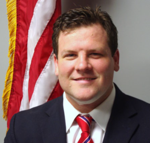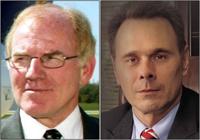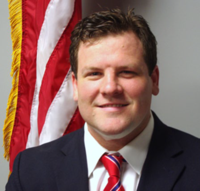Madison County state’s attorney seeks to block new Illinois judicial election law | Local Business
EDWARDSVILLE — Madison County State’s Attorney Tom Haine filed a lawsuit Friday in an attempt to block what he called a “dubious” new Illinois law that requires judicial elections to be decided by voters in new sub-circuits rather than countywide.
Illinois GOP leaders have called the new law a judicial “power grab” in the Metro East county where much of the nation’s lucrative asbestos litigation is filed but voters have lurched to the right in recent elections.
The lawsuit followed a 21-2 vote last week at the Madison County board condemning the law and authorizing Haine, a Republican, to take legal action, the Edwardsville Intelligencer reported.
The law passed both chambers of the Democrat-dominated Illinois Legislature on Jan. 5, the same day an amendment inserting the judicial sub-circuit provision was added to a bill originally dealing with court security. Democratic Gov. J.B. Pritzker signed it two days later.
People are also reading…
The bill’s sponsors argued the new sub-circuits would allow voters to choose more diverse judges in some counties.
But while most Illinois judicial circuits that had judicial sub-circuits added won’t use them to choose judges until 2024, the law takes immediate effect in the state’s Third Judicial Circuit covering Madison County, where two Republicans appointed to fill vacancies are up for election to full six-year terms in November.
“This sub-circuit law has serious Constitutional issues and is being rushed forward in a reckless way,” Haine said in a statement Saturday. “We are arguing that a pause is warranted here to let clearer heads prevail. With this pause, our upcoming 2022 judicial elections can be held countywide, as they have always been, while the courts closely review this very dubious new sub-circuit scheme.”
Under the law, the next three Madison County judges would be chosen by voters in a sub-circuit hugging the Mississippi River from Alton to Granite City, considered a strongly Democratic area. The two Republican judges running in 2022, Amy Sholar and Christopher Threlkeld, also have to move to the new sub-circuit to run to retain their judgeships.
Currently, Madison County voters elect eight judges at large in the county. Bond County, which is also in the Third Judicial Circuit, elects one judge.
After the first sub-circuit elections for the next three judges, a second sub-circuit covering the more urban areas of Collinsville and Edwardsville would select the next three.
A third sub-circuit covering much of the rural portions of Madison County would then select the next two judges. All three sub-circuits have between 88,000 and 90,000 people, according to Haine’s lawsuit.
”No explanation is provided in the act for the disenfranchisement of the 3rd sub-circuit, which assigns only two resident judgeships even though the population is substantially similar to the 1st and 2nd sub-circuits,” Haine’s lawsuit says.
Haine argues the act used out-of-date precincts to draw the new sub-circuits. He also argues that the immediate application will confuse voters, and that voter registration cards that don’t contain the new sub-circuit information have already been processed and reviewed by the Madison County clerk.
Madison County, for years a Democratic bastion, has moved to the right since 2016. But the county is big business for plaintiff firms in the multimillion-dollar asbestos litigation industry.
In 2020, more asbestos lawsuits were filed there than anywhere else in the country, according to consulting firm KCIC. Its so-called rocket docket is set up to resolve asbestos claims quickly, and the largest firms in the industry are based in the St. Louis region, including the Gori Law Firm and Simmons Hanley Conroy.














